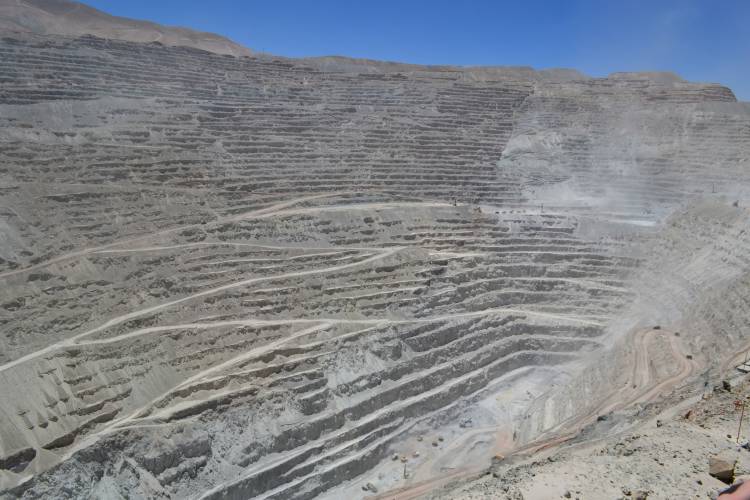The Union government has revised a rule, allowing itself to directly issue licences to private companies. This is a significant shift as this responsibility previously belonged to mineral-rich states. Under the new scheme, the government will extend exploration licences for all major minerals, excluding atomic ones. The primary goal is to attract larger mining companies and encourage participation in government-funded projects.
This development follows years of efforts to overhaul the sector. In 2016, the government launched the National Mineral Exploration Policy to promote private sector participation in mineral exploration. Changes to the Mines and Minerals (Development and Regulation) Act (MMDR Act) in 2021 gave state governments the authority to approve private companies for mineral exploration activities. The 2023 Mines and Minerals (Development and Regulation) Amendment Bill included six minerals, including lithium, in a list of “critical and strategic” minerals.
READ | Modi 3.0: Welfare measures in focus after election setback
Despite these efforts, private company participation in minerals exploration did not increase as hoped. To address this, the central government received the power in 2023 to directly issue exploration licenses for 29 important minerals to approved private agencies (NPEAs) through changes to the MMDR Act. Delays in state approval of NPEA exploration projects and funding disbursement through state channels prompted the introduction of the new scheme.
The National Mineral Exploration Trust (NMET) plays a key role in boosting India’s mineral exploration sector by providing funding and support to encourage exploration activities and attract private companies. It is hoped that both major mining firms and global junior mining companies will be keen to participate in NMET-funded projects. Currently, NMET handles a fund exceeding Rs 5,000 crore.
India’s mineral reserves
Despite having significant reserves, India’s mine sector is highly under-penetrated, with the country having explored only 10% of its Obvious Geological Potential (OGP). Less than 2% of India’s vast reserves have been mined, primarily due to the country’s allocation of less than 1% of the global mineral exploration budget. According to mines ministry data, around 200,000 square kilometres of OGP area is yet to be surveyed by government agencies.
The government is actively trying to change this scenario by tweaking existing laws. Since states gained the authority to approve private exploration companies in 2021, the Ministry of Mines reports some progress. Twenty-two agencies have been authorised, currently undertaking 31 exploration projects using NMET funds of around Rs 35.23 crore. Notably, about 80% of these projects target critical minerals.
The importance of critical minerals cannot be overstated at a time when economies around the globe are rushing to fine-tune their AI capabilities. Critical minerals are the foundation of modern tech and play a vital role in various sectors such as electronics, clean energy, and defence. Despite significant reserves, India is heavily reliant on imports for most of the minerals identified as crucial for the country’s economic growth and national security by the Ministry of Mines.
The Ministry reports 100% import dependence on countries like China, Russia, and Australia for minerals like lithium (used in electric vehicle batteries) and cobalt (essential for electronics). India imported over $22 million worth of lithium in 2021-2022. This dependence extends to finished products as well, with India reportedly spending over $1.7 billion on imported lithium-ion batteries in the same year.
The past few years have revealed that global supply chains of various commodities are highly vulnerable to shocks, leading to a lack of availability and skyrocketing prices. Considering this, India must take proactive steps to ensure the availability of minerals, which are the backbone of the country’s manufacturing, infrastructure, and advancement. India’s clean energy transition targets are also contingent on the availability of critical minerals such as lithium, cobalt, graphite, and rare earth elements (REEs).
A World Bank study suggests that the demand for critical metals like lithium and cobalt will likely rise by nearly 500% by 2050. Presently, China has majority ownership of cobalt mines in the Democratic Republic of Congo, which single-handedly controls 70% of the world’s mined cobalt. China also has the largest amount of REE reserves of any country, followed by Vietnam, Brazil, and Russia. On the other hand, India has 6% of the world’s rare earth reserves but only produces 1% of global output.
There have been concerns in the private sector about favouritism and misuse. While the early 2010s saw the mining industry gathering momentum, the allocation of 2G spectrum and natural resources like coal blocks ceased this progress.
While public sector undertakings explore minerals, they have not been very successful in exploring deep-seated and critical minerals due to the high cost and risk involved. Private companies, especially junior explorers, can bring in expertise and financial resources to accelerate exploration efforts. Currently, existing regulations restrict private companies from profiting directly from discoveries, and the lengthy process for government auctions after exploration discourages investment. By incentivising private sector participation in mine exploration, India can match the competitiveness of developed countries in the sector.

